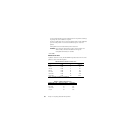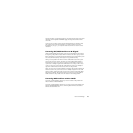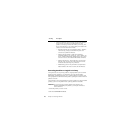Chapter 5: Converting Partitions74
IMPORTANT! You will lose file system-specific information when converting from
NTFS to FAT. Refer to “NTFS Information Lost When Converting to FAT
or FAT32” on page 75 for additional information.
If the conversion fails when you apply changes, refer to the bulleted list below for a list of
possible reasons.
Restrictions on Converting NTFS Partitions to FAT or FAT32
NTFS is a more advanced file system than FAT and FAT32. Therefore, depending on the
NTFS features used on the partition, the type of data, and partition size, you may or may
not be allowed to complete the conversion.
If you receive an error message and the conversion stops, it is usually caused by one or
more of the following:
• The file system for conversion is not allowed for the current partition size. A FAT32
partition should be greater than 256 MB, and a FAT partition must be less than 2 GB.
• The NTFS partition has data in memory that has not yet been written to the hard disk.
• ·The Windows 2000/XP NTFS partition has compressed files, sparse files, reparse
points, or encrypted files. In such case, you can uncompress and/or move (or delete)
the sparse files, then repeat the conversion.
• The file system has errors, such as lost clusters and cross-linked files. You can fix
these problems, then try the conversion again.
• There is not enough temporary space in the partition to do the conversion. The
conversion will require the NTFS system and the FAT32 system files until the last
step of the conversion. Also, there is data in NTFS File Replication Services that must
be moved to external clusters and saved.


















